Comments / Questions (41)
![]() Agnieszka wrote:
Agnieszka wrote:
Dzień dobry, Czy gdzieś znajdę tutorial video do tej bluzeczki ? Oczywiście może być płatny. Pozdrawiam
26.10.2025 - 10:08DROPS Design answered:
Witaj Agnieszko, niestety nie mamy na naszej stronie video na cały ten wzór, tylko na wykonanie poszczególnych oczek/ściegów/technik. Wpisz na YT Echo Mountain Top i wydaje mi się, że był wykonywany na kanale Anny Cierniak. Pozdrawiamy!
27.10.2025 - 15:33
![]() Merete Petersen wrote:
Merete Petersen wrote:
Jeg mangler målskema for de enkelte størrelser
03.09.2025 - 07:54DROPS Design answered:
Hej Merete. Du hittar en målskisse längst ned på opskriften , med plaggets mål i cm i alla storlekar. Mvh DROPS Design
03.09.2025 - 09:33
![]() Mirka wrote:
Mirka wrote:
Hi, bij breien van patroon A.1. voor maat M is er meerdering in rij 7 aan het begin en einde van het herhaalen patroon. Ik snap niet waar ik moet de omslag plaatsen, want in de rij 6 begin je met averechtse steek en in rij 7 met recht, omslag en ga je door met gedraaid rechts. Moet ik gewoon de averechtse steek als recht breien, omslag doen en dan verder in het patroon? Alvast bedankt voor de antwoord.
03.08.2025 - 08:35DROPS Design answered:
Dag Mieke,
In rij 7 begin je inderdaad met een rechte steek (dus een rechte steek boven een averechte steek van de vorige naald) en dan een omslag. Aan het eind maak je ook weer een omslag. Op de naald 8 brei je de eerste 2 steken van de herhaling recht en de laatste steek ook.
03.08.2025 - 09:40
![]() Anne Dahlgren wrote:
Anne Dahlgren wrote:
Efter A1 har jeg strikket 12 x19 masker det giver 228, men i opskriften står 216, hvilket er forkert. Når jeg del til for og bagstykke samt ærmer fordeler jeg så 2 x 66 og 2 x 48 i stedet for 62 og 46? Og skal jeg stadig slå 6 masker ekstra op efter at have sat 46 til side til hvert ærme?
19.05.2025 - 18:50DROPS Design answered:
Hej Anne, i størrelse small skal du kun have 18 masker (ikke 19) når du er færdig med diagrammet. 12 x 18 = 216 masker :)
22.05.2025 - 11:38
![]() Rebecca wrote:
Rebecca wrote:
In the instructions for the body, it says “Continue with stocking stitch for 14 cm.” (for all sizes) and then the 4cm rib before casting off. This would mean that the underarm to cast off measurement would be 18cm for all sizes from small all the way up to xxxl. Shouldn’t the length increase with each size? Is that correct or a mistake in the pattern?
13.04.2025 - 21:49DROPS Design answered:
Dear Rebecca, you can check the measurements schematic at the bottom. The difference in length of the top will be due to the yoke, while the body section will be 18 cm in all sizes. The top is not very long. But you can lengthen it if you think it's too short; simply work in stocking stitch more cm and finish with the 4cm rib when there are 4cm remaining for your desired measurements. Happy knitting!
13.04.2025 - 23:39
![]() Josefien wrote:
Josefien wrote:
Goedenavond, In het patroon staat, dat ik 6 steken moet opzetten in de zijkant onder de mouw. Dit begrijp ik niet helemaal. Kunt u mij helpen? Mvg,
08.02.2025 - 20:30DROPS Design answered:
Dag Josefien,
In de bovenste video van de lijst met video's die bij het patroon staan, wordt uitgelegd hoe je een trui van boven naar beneden breit en hierin wordt (ongeveer op 7:30 min getoond hoe je steken opzet in de zijkant onder de mouw.
09.02.2025 - 10:29
![]() Lisbet Jacobsen wrote:
Lisbet Jacobsen wrote:
Jeg forstår ikke den måde i har beskrevet måden på hvordan ærmet skal strikkes på kunne i ikke bare skrive lænden på ærmet fra hvor man har strikket masker op under ærmet i stedet for at skrive at der skal strikkes 3 cm fra deling tages der ind og 2 cm fra deling og strikke 4 cm rib ærmet måler ca 6 cm jeg strikker en str XXXL
05.02.2025 - 11:08DROPS Design answered:
Hej Lisbeth, det lyder til at det stemmer fint. Se også målene i måleskitsen nederst i opskriften :)
12.02.2025 - 10:50
![]() Jag wrote:
Jag wrote:
Hello! Ezen a részen rossz a fordítás, mert fogyasztást ír, pedig szaporítani kell. VÁLLRÉSZ:...... .....UGYANAKKOR, az 1. körben, egyenletesen elosztva fogyasszunk 12-16-20-26-28-30 szemet = 120-130-140-150-160-170 szem.
30.01.2025 - 21:14
![]() Ceci wrote:
Ceci wrote:
For the final instruction for the sleeves, are the numbers reversed in order for different sizes? It seems odd that the largest size would have the shortest sleeves - I assume this was a pattern typo?
24.01.2025 - 20:38DROPS Design answered:
Dear Ceci, the sleeve measurements are shorter in the larger sizes because the yoke was longer, so the sleeve section of the yoke compensates for the missing cm in the actual sleeve. Happy knitting!
25.01.2025 - 19:50
![]() Iris wrote:
Iris wrote:
In de pas staat dat ik na A.1 tricot moet breien tot het werk 24cm meet vanaf de opzetrand. Is de opzetrand het begin van de pas, het begin van A.1 of het begin van de kraag? Alvast bedankt!
29.08.2024 - 15:24
Echo Mountain Top#echomountaintop |
|||||||||||||||||||||||||
 |
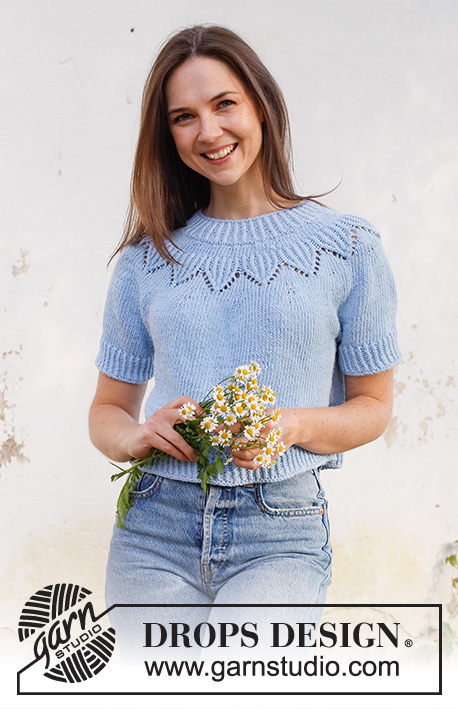 |
||||||||||||||||||||||||
Knitted jumper in DROPS Paris. The piece is worked top down, with round yoke, lace pattern and short sleeves. Sizes S - XXXL.
DROPS 230-19 |
|||||||||||||||||||||||||
|
------------------------------------------------------- EXPLANATIONS FOR THE PATTERN: ------------------------------------------------------- PATTERN: See diagram A.1. Choose diagram for your size. DECREASE TIP (for sleeves): Decrease 1 stitch on either side of the marker thread as follows: Work until there are 3 stitches left before the marker thread, knit 2 together, knit 2 (marker thread sits between these 2 stitches), slip 1 stitch as if to knit, knit 1 and pass the slipped stitch over the knitted stitch (2 stitches decreased). ------------------------------------------------------- START THE PIECE HERE: ------------------------------------------------------- JUMPER – SHORT OVERVIEW OF THE PIECE: The neck and yoke are worked in the round with circular needle, from mid back and top down. The yoke is divided for body and sleeves and the body is continued in the round with circular needle. The sleeves are worked in the round, with double pointed needles/short circular needle. NECK: Cast on 80-84-88-88-92-96 stitches with short circular needle size 4 mm and DROPS Paris. Knit 1 round, then work rib (knit 1 twisted, purl 1) in the round for 3 cm. On the next round increase every other purl-1 to purl-2 by making 1 yarn over after every 2nd purled stitch = 100-105-110-110-115-120 stitches. Continue this rib. NOTE: On the first round purl the yarn overs twisted to avoid holes. When the rib measures 4 cm, knit 1 round where you increase 8-9-10-14-17-20 stitches evenly spaced = 108-114-120-124-132-140 stitches. YOKE: Change to circular needle size 5 mm. Work stocking stitch for 2-3-3-4-4-5 cm – AT THE SAME TIME on the last round increase 12-16-20-26-28-30 stitches evenly spaced = 120-130-140-150-160-170 stitches. REMEMBER THE KNITTING TENSION! Work A.1, 12-13-14-15-16-17 times on the round and increase as shown in the diagram. When A.1 has been completed in height there are 216-234-252-285-304-323 stitches. Continue with stocking stitch – AT THE SAME TIME on the first round increase 0-2-8-3-4-1 stitches evenly spaced = 216-236-260-288-308-324 stitches. Work until the piece measures 20-22-24-26-28-30 cm from the cast-on edge. Now divide for the body and sleeves as follows: Work 31-34-37-41-45-49 stitches (½ back piece), place the next 46-50-56-62-64-64 stitches on a thread for the sleeve, cast on 6-6-8-8-10-12 stitches (in side under sleeve), work 62-68-74-82-90-98 stitches (front piece), place the next 46-50-56-62-64-64 stitches on a thread for the sleeve, cast on 6-6-8-8-10-12 stitches (in side under sleeve), work 31-34-37-41-45-49 stitches (½ back piece). The body and sleeves are finished separately. THE PIECE IS NOW MEASURED FROM HERE! BODY: = 136-148-164-180-200-220 stitches. Continue with stocking stitch for 14 cm. Knit 1 round where you increase 14-14-16-18-20-22 stitches evenly spaced = 150-162-180-198-220-242 stitches. Change to circular needle size 4 mm. Work rib (knit 1 twisted, purl 1) for 4 cm. Cast off with knit, a little loosely. The jumper measures approx. 42-44-46-48-50-52 cm from the shoulder down. SLEEVES: Place the 46-50-56-62-64-64 stitches from the thread on the one side of the piece on short circular needle/double pointed needles size 5 mm and knit up 1 stitch in each of the 6-6-8-8-10-12 stitches cast on under the sleeve = 52-56-64-70-74-76 stitches. Insert a marker thread in the middle of the 6-6-8-8-10-12 stitches under the sleeve. Allow the thread to follow your work onwards; it will be used when decreasing under the sleeve. Start at the marker thread and work stocking stitch in the round for 3 cm. Now decrease 2-2-2-2-0-0 stitches under the sleeve – read DECREASE TIP = 50-54-62-68-74-76 stitches. Continue working until the sleeve measures 7-6-5-4-3-2 cm from the division. Change to double pointed needles size 4 mm and work rib (knit 1 twisted, purl 1) for 4 cm. Cast off with knit, a little loosely. The sleeve measures approx. 11-10-9-8-7-6 cm. Work the other sleeve in the same way. |
|||||||||||||||||||||||||
Diagram explanations |
|||||||||||||||||||||||||
|
|||||||||||||||||||||||||
 |
|||||||||||||||||||||||||
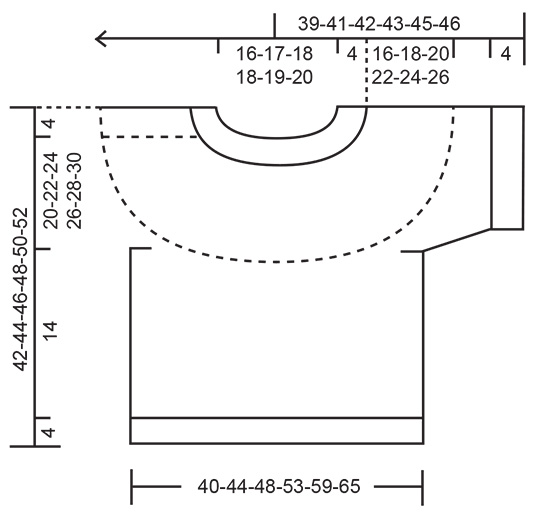 |
|||||||||||||||||||||||||
Have you finished this pattern?Tag your pictures with #dropspattern #echomountaintop or submit them to the #dropsfan gallery. Do you need help with this pattern?You'll find 30 tutorial videos, a Comments/Questions area and more by visiting the pattern on garnstudio.com. © 1982-2025 DROPS Design A/S. We reserve all rights. This document, including all its sub-sections, has copyrights. Read more about what you can do with our patterns at the bottom of each pattern on our site. |
|||||||||||||||||||||||||







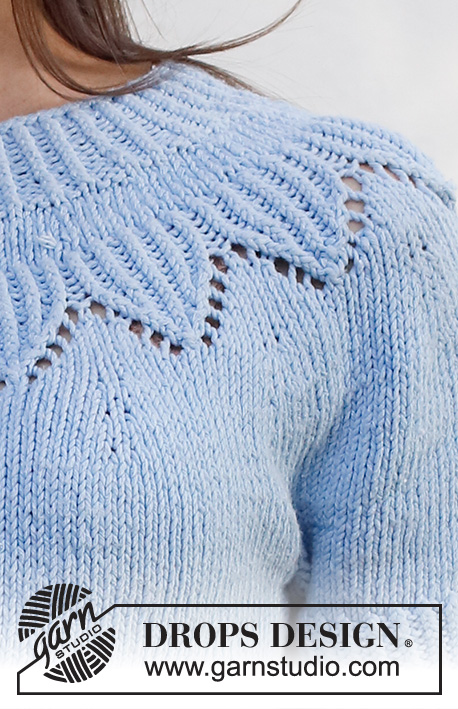

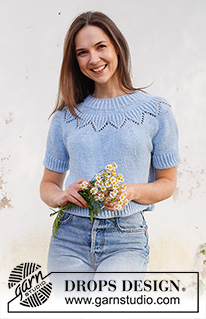
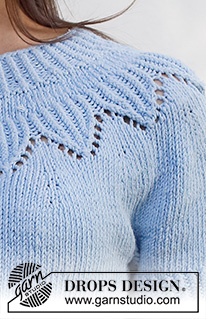
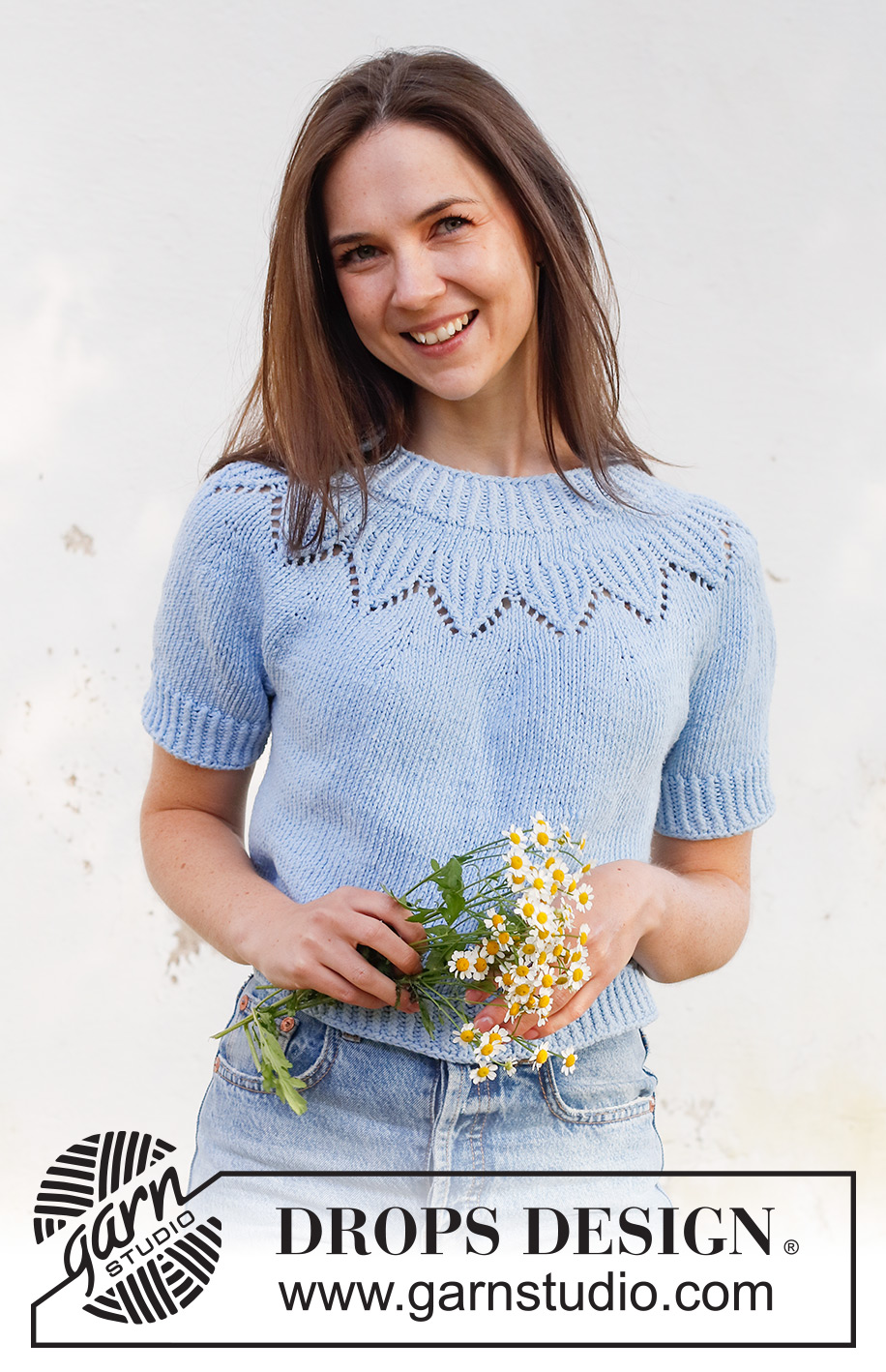
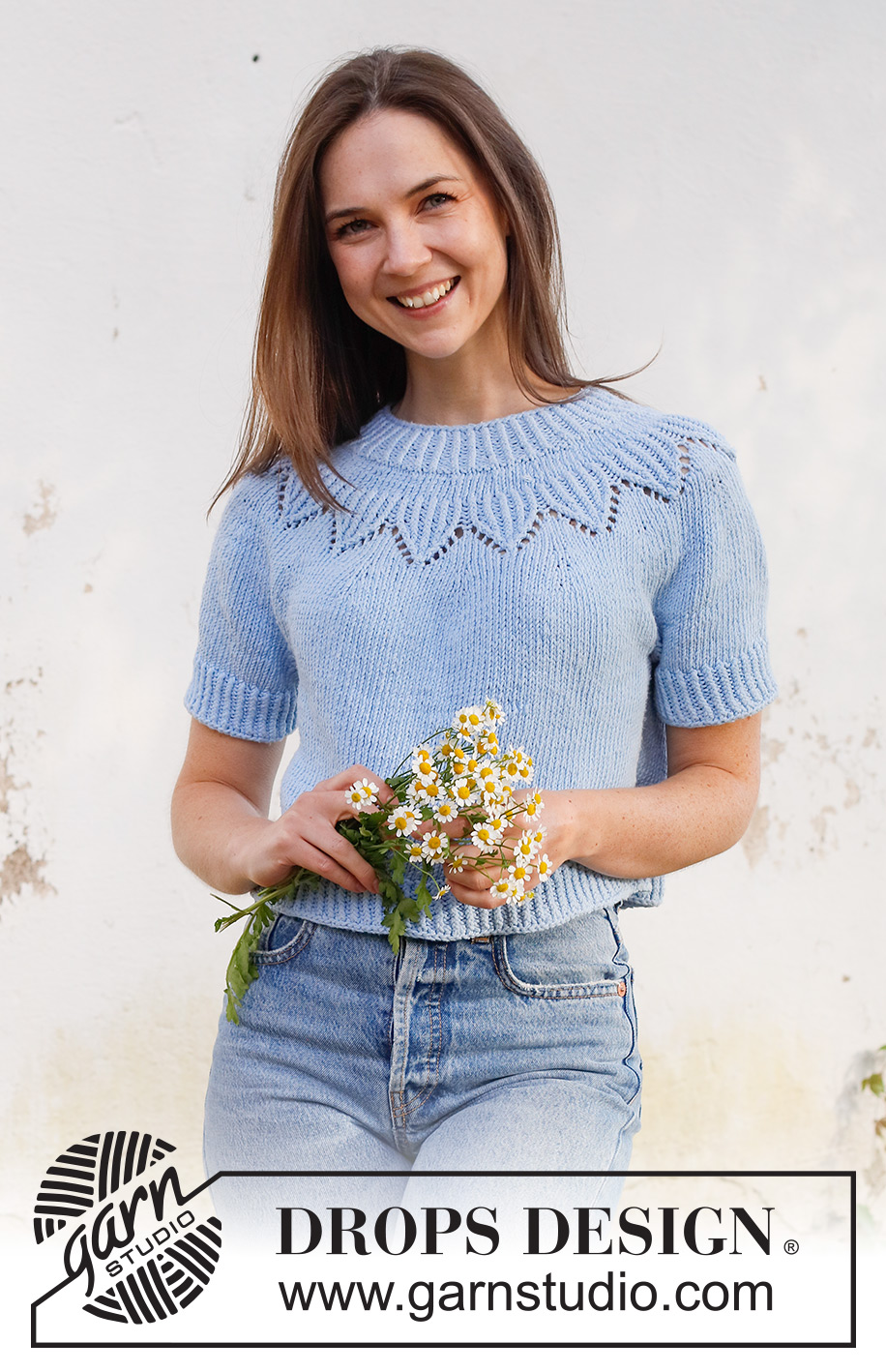
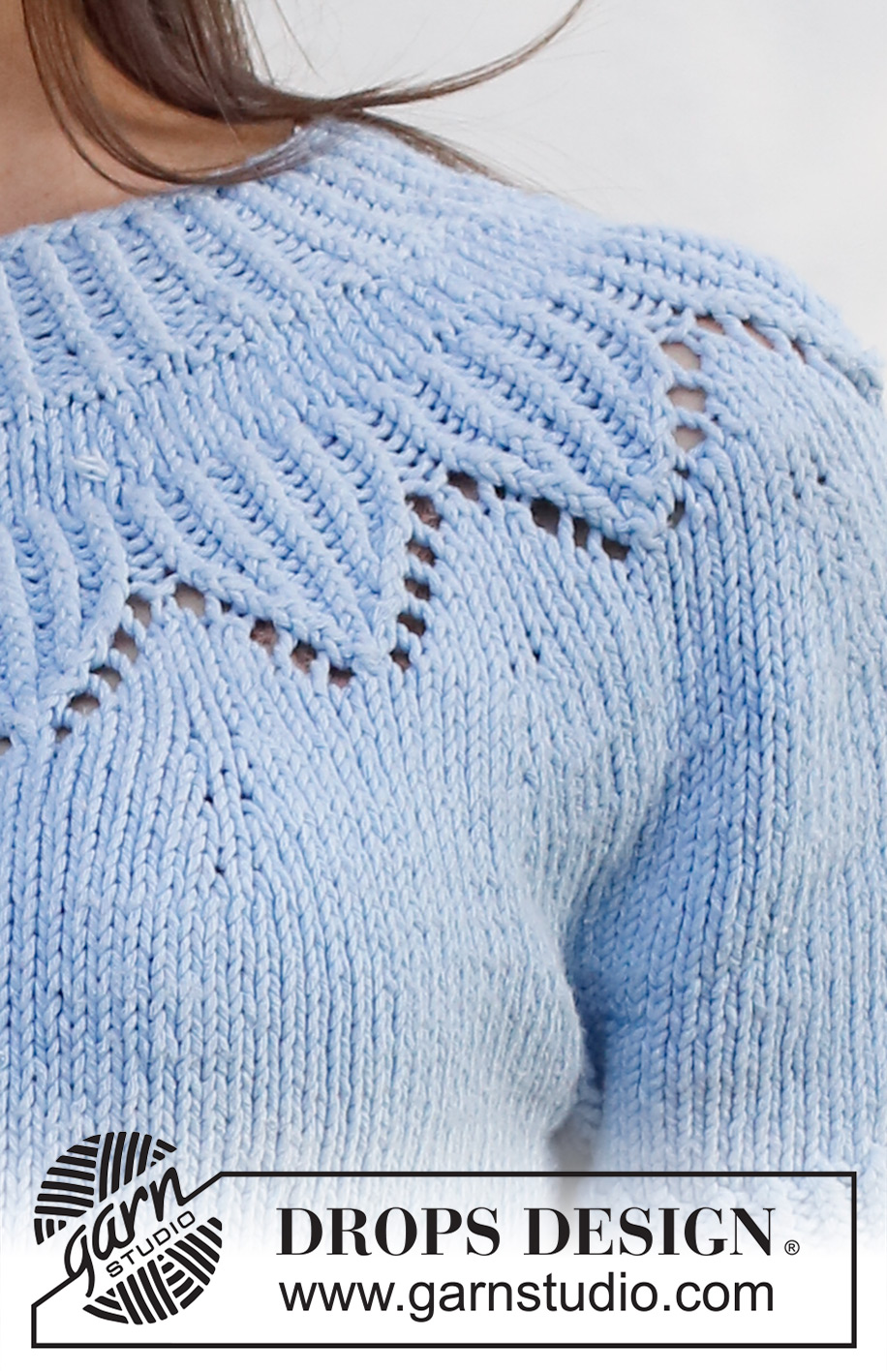


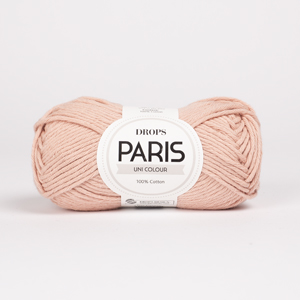
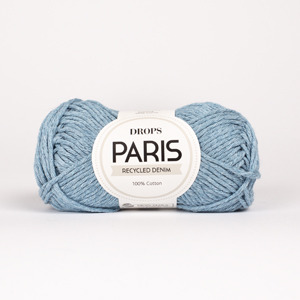



























































Post a comment to pattern DROPS 230-19
We would love to hear what you have to say about this pattern!
If you want to leave a question, please make sure you select the correct category in the form below, to speed up the answering process. Required fields are marked *.